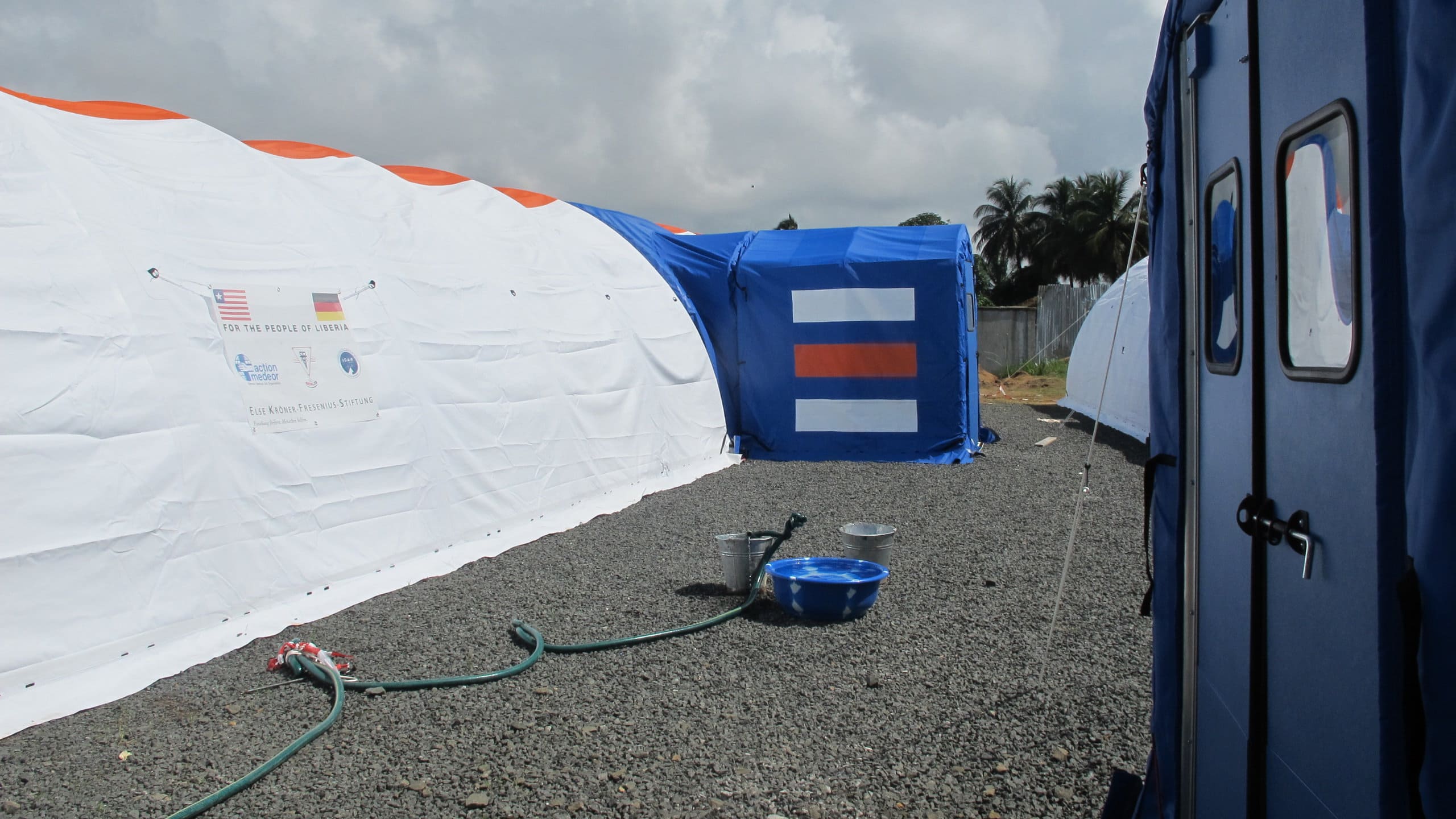BLU-MED Provides Ebola Isolation Units for use in Liberia
BLU-MED Response Systems Ebola Isolation Units are being used to fight the spread of the infection in Liberia. Sold through MD Medicus and financed by Action Medeor, a German medical aid organization, two 22-bed isolation units were deployed to the Liberian capital city of Monrovia.
Each American-made BLU-MED Medical Facility is divided into a reception area, a room for changing clothes and an isolation and treatment unit, according to a Nov. 13 Deutsche Welle report. The report further stated that the isolation areas are equipped with special ventilators used to pump clean, fresh air into the ward while extracting used air, and that filters and ultraviolet radiation ‘kill any viruses or bacteria in the used air.’

In addition to medical benefits, the two isolation units are being credited with providing a psychological boost.
‘You need a positive environment in order to get healthy, and especially if you are suffering from Ebola, you are stigmatized,’ Dr. Margret Gieraths-Nimene said in an interview with Deutsche Welle. ‘But now the patients have the opportunity to receive treatment. In July and August, there were no treatment centers, there were no empty hospital beds [ready for Ebola patients.] And now there are sufficient units – that is great.
When combined, the two BLU-MED Mobile Hospitals provide 44 beds, or about 20 percent of what the World Health Organization has said is needed, according to Deutsche Welle.
Liberia is one of three West African countries considered to be ground zero for the Ebola outbreak. Almost 7,000 Ebola cases have been reported in Liberia as of Nov. 10, and more than 2,800 people have died. However, Liberia saw weekly case numbers fall from mid-September to the end of October.
Although the situation in Monrovia appears to be stabilizing, the head of the WHO’s Ebola Response Team, Dr. Bruce Aylward, said declines in the number of infections could represent a lull because the virus has a tendency to appear in waves. Aylward said Ebola still represents an extreme danger.
‘While the Ebola transmission is ongoing, the potential for a resurgence in case numbers, through ongoing unsafe burials or undetected cases within the community remain a real threat which could lead to a further epidemic wave,’ Aylward said in an AllAfrica.com report.
A Nov. 13 UNMEER report stated that residents of rural areas suffering through Ebola outbreaks could decide to flee their homes in search of health care, which could contribute to the virus’ spread.
United States troops are working with the Liberian military to build additional Ebola treatment and isolation units, but the recent downturn in infection numbers is expected to lead to a decrease in construction, according to a Nov. 18 report on the USA Today website.